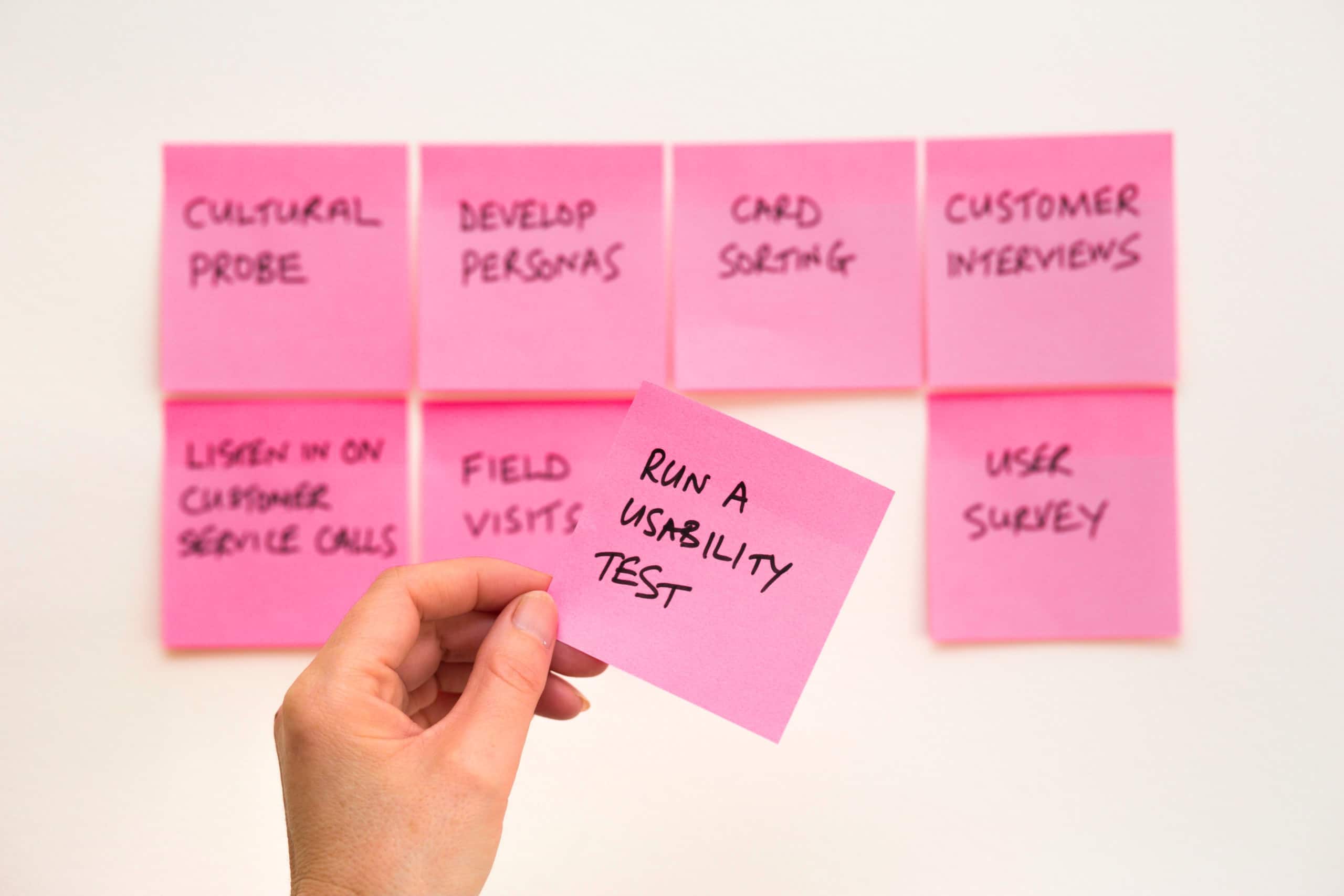Risk Mitigation: Perfecting your Strategy

In a perfect world, businesses would face no problems. Yet, as we know, companies exist in the real world, and it’s rife with risks. Risks come in many different forms and at uncertain times, so risk mitigation strategies exist so that your business can be prepared.
How can you prepare for something unknown? Let’s take a look at what risk mitigation means, how to devise a plan and ways you can perfect your risk mitigation strategies.
Table of Contents
2. What is in a Risk Mitigation Plan
3. Risk Mitigation vs. Risk Avoidance
4. Risk Mitigation Tools That Can Help
5. How to Start Risk Mitigation
6. Use Trend to Inform Actions
8. 5 Main Strategies of Risk Mitigation
What is Risk Mitigation? Defined
Risk mitigation is the steps you take to reduce harmful effects on your business. It’s a process that entails developing methods to mitigate threats that can harm project objectives. Five main risk mitigation strategies exist, and part of the risk mitigation process is evaluating them to decide which is the right approach to take for the potential problem.
As such, risk mitigation tends to involve a team that is designed for the specific task of identifying, assessing and monitoring risks that are associated with a project. Not only does this team evaluate what could happen if the threat transpires, but they also design a plan to deal with the effects if and when they occur.
What is in a Risk Mitigation Plan?
Everything you need to know about the risks of a project exists in a risk mitigation plan. To get specific, the plan should include:
- Specific details of what actions should be taken
- A timeline of when it should be accomplished
- Who is responsible
- The resources and funding required to implement the plan
The level of detail for a risk mitigation plan depends on the nature of the problem as well as the life-cycle phase of where the project stands.
Risk Mitigation vs. Risk Avoidance
Some businesses and situations allow for the choice between risk mitigation and risk avoidance. What this means is:
Risk Mitigation:
- When you cannot eliminate the risk, the next best-case scenario is to reduce its negative effects. This is risk mitigation, and it is the most used risk response strategy in business.
- One of the most common ways to mitigate risk is to employ testing. When you test small samples in production, or you enable software systems to run tests before scaling, you can minimise many potential detrimental outcomes.
Risk Avoidance:
- If a business could avoid every risk, wouldn’t that be the best choice? It sure would, but again, we don’t live in a perfect world! That being said, there are ways to enact risk avoidance in practice.
- This can be done when you can adjust a plan such that the events that cause risk can be avoided.
- In actuality, this can work with suppliers and currency exchange rate risks. Rather than working with a foreign supplier, a business can avoid the risk of the currency market’s volatility entirely by choosing a local supplier instead.

Risk Mitigation Tools That Can Help
The best risk mitigation plans combine data and analytics with human critical thinking skills. You can begin with brainstorming sessions and SWOT analysis by which you assess the types of risks that are relevant to your project or business. You can look over past documentation and company history of similar experiences to gauge potential outcomes and ideate how to reduce or avoid said risks.
Going a step further, you can leverage data automation tools to help you with this critical step of risk mitigation. You can use a data automation tool like Solvexia for identifying and reducing many risks such as:
- Perform predictive analysis which uses machine learning and algorithms to determine the likelihood of outcomes in the future based on historical data.
- Use it as a sandbox for testing. As previously mentioned, one of the best ways to mitigate risk is to test out a new process or sample size before enacting it organisation-wide. Solvexia allows you to test methods and monitor and analyse results before pushing the project forward.
- Alert you if any risk measurements are breached, such as crucial metric going below a specific value.
- Increase compliance with audit trails
- Reduce errors from the manual process by automating them, allowing staff to focus on tasks that matter to the business, drive down risk and improve business performance.
- Reduce critical man dependency, so if someone goes on holiday or is sick, their work continues seamlessly without them.
How to Start Risk Mitigation
The most important thing you can do when it comes to risk mitigation is to begin the process! Simply put, you have to devise a plan. For a proper risk mitigation plan, you should include:
- A list of risks
- Rate the likelihood and potential impact of each risk occurring
- Assess current processes and controls
- Devise a plan of action
Use Trends to Inform Action
From businesses around the world, it’s possible to glean deep insight from trends and patterns. Here’s what experts have found when it comes to risk mitigation:
- Many businesses choose the path of “ignorance is bliss” and prefer not to focus on compliance risk
- Most organisations are unaware of where their strengths and weaknesses reside
- Too much time is being spent on resources and programs that are ineffective in controlling risk
- Management often desires to benchmark and reporting, but it’s not happening
How to Evaluate Risk
A risk mitigation plan involves the assessment of risk. Here’s how you can adequately evaluate risk so you can implement the appropriate risk mitigation strategy:
Identification: First, you need to identify the types of risks inherent in a project or plan. This is the only way to know if the risk can be avoided. There are internal and external risks. The best way to manage internal risks is to set up standardised procedures (and use automation software to help enable such processes). External risks include situations that are outside of the business’ control, like natural disasters. These are neither avoidable nor desirable.
Impact Assessment: In this step, you determine the likelihood. You should assign a probability to understand how likely it is for each risk to occur. At the same time, you need to evaluate the depth of the consequences to your business if the threat does indeed come to fruition.
Strategies: Based on the impact assessment, you can prioritise which risks are most important to focus on. Then, you can decide what risk mitigation strategy can be applied. For risks that are less likely to occur, it’s useful to monitor them, but not worthwhile to focus all your time and energy on low likelihood events.
5 Main Strategies of Risk Mitigation
As a process, a business’ risk mitigation strategy will vary based on the situation at hand and the type of business. Business goals also play a role in determining what strategy to employ at any given time. There are five main strategies for risk mitigation, which include:
1. Accept: This is when you understand that the risk exists and purposefully decide that you will accept it without employing any specific effort to try to control it. This decision will come from the top, as in, it will require that a project leader is on board to accept the risk (knowing the potential consequences). Risk acceptance is a strategy even though you don’t have to do anything with regards to the risk’s effects. Choosing to accept risk happens when the following condition is met: The risk’s impact or likelihood is less costly than choosing an alternate risk mitigation strategy.
2. Avoid: If you can do this, avoiding the risk entirely is the best way to prevent adverse effects. It requires that you make an adjustment or change a plan to prevent the cause of the risk. Frequently, risk avoidance tends to be the most expensive of all the strategies. But, if the risk is big enough or dangerous enough, it can prove to be a worthwhile and cost-effective route (especially in the long-term).
3. Control: In the case of controlling risk, you understand the risk is likely to occur, but you present ways to reduce its impact. Risk control (or limitation) is the most common strategy because it involves a mixture of avoidance and acceptance. It does require conscious effort and the allocation of resources. For example, risk control can come in the form of gathering data or using early warning systems and alerts. This provides assistance to identify better, mitigate and face the risk. In this regard, businesses plan for ways to minimise any detrimental outcomes by taking actions.
4. Transfer: Risk transference is what happens when you have insurance. It’s the reassignment of organisational accountability bypassing the risk on to another stakeholder to deal with it. Automated software solutions can also serve as a type of insurance. For example, Solvexia has audit trails and bank-grade security that help to alleviate compliance risk and data security risks. Bypassing on such tasks to an expert third party, your business can focus on its specialisations rather than worrying about risks.
5. Monitor: With low-likelihood risks, the monitoring strategy is the best choice. It requires that you watch the environment for any changes that may affect the consequences of a risk. In smaller organisations, risk monitoring could be done manually. However, for any organisation size, it’s best to employ technology to help monitor risk. With data automation tools, you can better watch risk as information is automatically updated in real-time, alerts can be set up, and you can schedule reports that get delivered automatically to specific people at a particular point in time.

Risk Mitigation Best Practices & The Importance of Data and Automation
The best practices of risk mitigation involve data and automation. This is because data and automation tools play such a significant role in continuous process improvement and the ability to carry out business processes accurately. Solvexia provides your team with an automated solution for data-heavy and monotonous tasks that are prone to human error. Human errors, bottlenecks and delays all pose various risks for an organisation’s inner workings. But, with an automation solution, you can significantly reduce risks and be able to maintain better control of what happens within your organisation.
Businesses who successfully employ risk mitigation strategies do the following:
- Involve stakeholders: To devise risk mitigation plans, it’s important to involve stakeholders. Stakeholders include managers, customers, shareholders and employees, for example. These individuals play a significant role in what happens to your organisation and can also provide insight as to how certain risks may affect them. This will help to inform what risk mitigation strategy you choose to employ.
- Risk culture: The creation of a risk culture involves strong leadership. Risk culture is the beliefs and attitudes that a group of people hold toward risk. If management supports a company culture that prioritises compliance and sets the tone that risk awareness is essential, then all those within an organisation will follow suit.
- Communication: Risk isn’t department-specific because organisations work like bodies - many systems come together to transform an input into an output. That’s why it’s so necessary to communicate risks in a business so that every stakeholder knows their responsibility surrounding the risk mitigation plan.
- Risk management policies: If you haven’t done so already, make sure to put your risk mitigation policies in a document that is accessible to all stakeholders. Clearly define risks and the response plan so that no one can claim they didn’t know what to do if a particular event unfolds.
- Continuous monitoring: Risk doesn’t just disappear even if you solve for one type of risk. To be able to control risks, you’ll have to monitor threats continuously and address them.
The Bottom Line
The only thing that is 100% certain when it comes to the uncertainty surrounding risks is that they indeed exist. That’s why it’s essential to have a risk mitigation strategy ready to go within your organisation. You can use automation tools like Solvexia to leverage historical data and help you better prepare for future events (thanks to analytics). Risk mitigation will also need a human element.
It’s up to management to determine how to approach various business risks. When doing so, it’s essential to think about all stakeholders to a business, both internally and externally. After identifying and assessing the likelihood of any risk, you can choose the best plan to enact with the help of your team and automation tools like Solvexia.
FAQ
Intelligent reconciliation solution
Intelligent rebate management solution
Intelligent financial automation solution
Intelligent Financial Automation Solution
Intelligent financial automation solution
Intelligent financial automation solution
Intelligent financial automation solution
Intelligent financial automation solution
Intelligent regulatory reporting solution
Free up time and reduce errors
Recommended for you

Request a Demo
Book a 30-minute call to see how our intelligent software can give you more insights and control over your data and reporting.

Reconciliation Data Sheet
Download our data sheet to learn how to automate your reconciliations for increased accuracy, speed and control.

Regulatory Reporting Data Sheet
Download our data sheet to learn how you can prepare, validate and submit regulatory returns 10x faster with automation.

Financial Automation Data Sheet
Download our data sheet to learn how you can run your processes up to 100x faster and with 98% fewer errors.

Financial Automation Data Sheet
Download our data sheet to learn how you can run your processes up to 100x faster and with 98% fewer errors.

Financial Automation Data Sheet
Download our data sheet to learn how you can run your processes up to 100x faster and with 98% fewer errors.

Financial Automation Data Sheet
Download our data sheet to learn how you can run your processes up to 100x faster and with 98% fewer errors.

Financial Automation Data Sheet
Download our data sheet to learn how you can run your processes up to 100x faster and with 98% fewer errors.

Financial Automation Data Sheet
Download our data sheet to learn how you can run your processes up to 100x faster and with 98% fewer errors.

Rebate Management Data Sheet
Download our data sheet to learn how you can manage complex vendor and customer rebates and commission reporting at scale.

Top 10 Automation Challenges for CFOs
Learn how you can avoid and overcome the biggest challenges facing CFOs who want to automate.
.svg)



